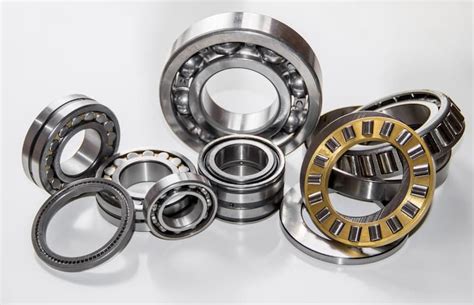The Ultimate Guide to Bearing Selection: How to Choose the Right Bearing for Your Application
Introduction
Bearings are essential components in various machines, devices, and equipment, enabling smooth rotation, reducing friction, and supporting loads. Selecting the right bearing for a specific application is crucial to ensure optimal performance, reliability, and safety. This comprehensive guide provides an in-depth understanding of bearing types, factors to consider when choosing a bearing, common mistakes to avoid, and a step-by-step approach to bearing selection. By following these guidelines, you can make informed decisions and maximize the effectiveness of your bearing systems.
Factors to Consider When Choosing a Bearing
Selecting the appropriate bearing involves careful consideration of several factors:
-
Load Capacity: Determine the maximum load that the bearing must withstand, including both radial and axial forces.
-
Speed: Consider the operating speed of the application to ensure the bearing can handle the rotational velocities.
-
Lubrication: Decide on the type of lubrication required, which can range from oil, grease, or self-lubricating materials.
-
Environmental Conditions: Consider the ambient temperature, humidity, and exposure to chemicals or other contaminants.
-
Cost and Availability: Factor in the budget and lead time for procuring the desired bearing type.
Types of Bearings
Various types of bearings are available, each with unique characteristics and applications:

-
Ball Bearings: Utilize rolling elements (balls) between inner and outer rings, providing low friction and high-speed capabilities.
-
Roller Bearings: Employ cylindrical or tapered rollers, offering higher load capacities than ball bearings, suitable for heavy-duty applications.
-
Linear Bearings: Guide linear motion along a shaft, often used in automated equipment and precision machinery.
-
Thrust Bearings: Designed to withstand axial loads, commonly used in gearboxes, wind turbines, and propulsion systems.
Common Mistakes to Avoid
To ensure reliable bearing performance, avoid common mistakes:

-
Overloading: Exceeding the bearing's rated load capacity can cause premature failure.
-
Incorrect Lubrication: Using the wrong lubricant or inadequate lubrication can lead to friction and wear.
-
Improper Installation: Mishandling during installation can damage the bearing or cause misalignment.
-
Ignoring Environmental Conditions: Failing to consider temperature, humidity, and exposure to harsh environments can result in corrosion or premature degradation.
Step-by-Step Approach to Bearing Selection
Follow this step-by-step process for efficient bearing selection:
-
Define Requirements: Determine the specific bearing requirements based on the factors mentioned earlier.
-
Research and Identify Options: Explore different bearing types and manufacturers to identify potential solutions.
-
Evaluate Performance Data: Analyze the bearing's specifications, load ratings, speed capabilities, and lubrication requirements.
-
Consider Environmental Impacts: Assess the environmental conditions and select a bearing that can withstand the operating conditions.
-
Select Bearing Type: Finalize the bearing type that best meets the overall requirements and constraints.
-
Verify Compatibility: Ensure the bearing dimensions and mounting arrangement are compatible with the application.
-
Consider Cost and Availability: Factor in the cost and lead time of the bearing to make a practical decision.
Why Bearing Selection Matters
Choosing the right bearing is crucial for several reasons:
-
Improved Performance: Optimized bearing selection ensures smooth operation, reduced friction, and increased efficiency of the equipment.
-
Enhanced Reliability: Properly selected bearings minimize the risk of premature failure, extending equipment lifespans and reducing downtime.
-
Reduced Maintenance Costs: Correct bearing selection can contribute to longer intervals between bearing replacements and reduce maintenance expenses.
-
Increased Safety: Reliable bearings enhance operational safety by preventing component failures and potential hazards.
Benefits of Using the Right Bearing
Employing the appropriate bearing offers numerous benefits:

-
Extended Machine Life: Reduced wear and tear on bearings and surrounding components result in longer machinery lifecycles.
-
Improved Productivity: Optimized bearing selection minimizes friction and resistance, enhancing equipment performance and productivity.
-
Reduced Energy Consumption: Efficient bearings contribute to lower energy consumption and operating costs.
-
Improved Cost-Effectiveness: Selecting the right bearing upfront can save money in the long run by minimizing maintenance and replacement expenses.
Conclusion
Bearing selection is a critical aspect of machine design and operation. By understanding the factors to consider, types of bearings available, common mistakes to avoid, and following a systematic approach, you can select the optimal bearing for your application. Proper bearing selection ensures improved performance, enhanced reliability, reduced maintenance costs, and increased safety. Remember to consult with experienced bearing manufacturers or engineers if you have any specific requirements or need further guidance.
